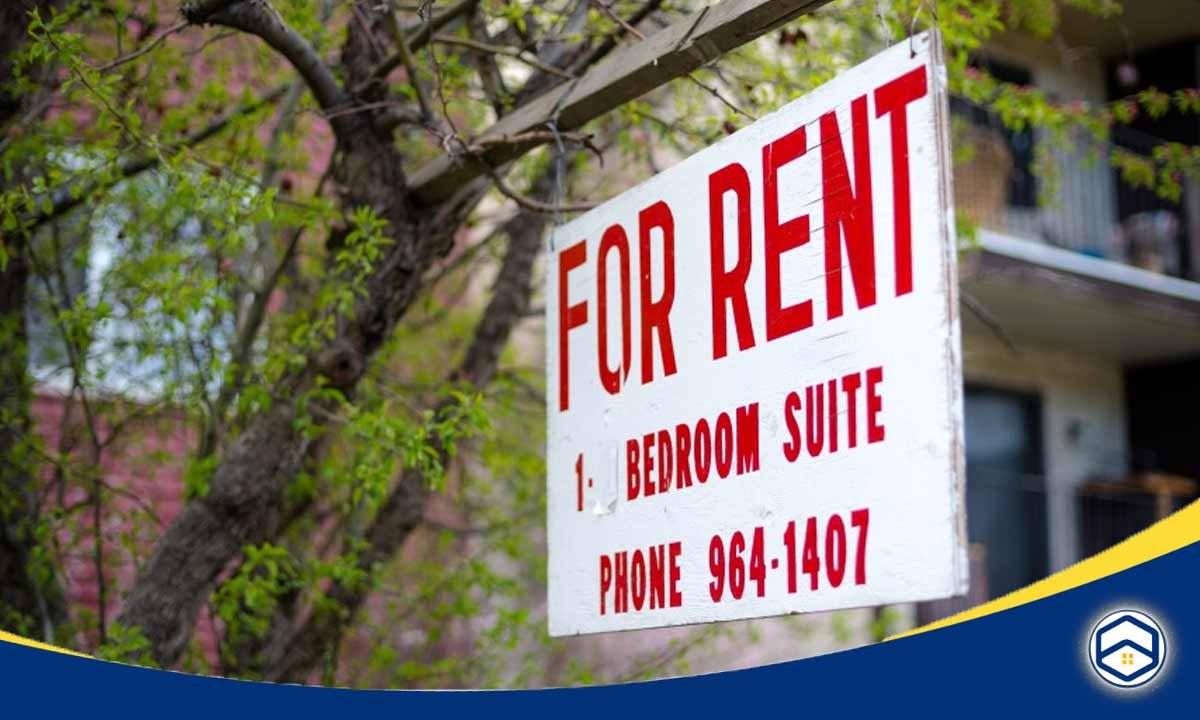A Rental Market Analysis (RMA) is a crucial tool for property owners, helping them assess the rental landscape and make informed decisions based on potential income. It delves into local trends, demand, and comparable rates to set competitive rents, maximizing returns.
Here’s an exploration of how an RMA assists real estate professionals in decision-making, followed by a comprehensive breakdown of five steps for performing an effective rental market analysis.
What Is a Rental Market Analysis (RMA)?

A Rental Market Analysis (RMA) is a pivotal tool used to assess the potential rental opportunities in a specific area and property.
It carefully examines various criteria to gauge the rental potential, aiding investors in making well-informed decisions rooted in the anticipated rental income.
By analyzing factors like local market trends, demand, and comparable rental rates, an RMA plays a crucial role in setting competitive rental rates, ensuring that landlords establish rents that attract tenants while maximizing returns on their investments. Here’s how an RMA can assist real estate professionals:
- Establishes competitive rental rates, reducing property vacancy.
- Optimizes property features and amenities to enhance property appeal.
- Assesses potential profitability through cash flow projections.
- Maximizes rental income by staying informed about market trends.
- Evaluate the income potential of potential property purchases.
- Empowers agents and brokers with valuable insights to assist clients in buying or selling rental properties.
5 Steps for Performing a Rental Market Analysis
A detailed rental market analysis helps evaluate rental potential in a specific area. By looking at things like average prices, rent rates, and returns on investment, it gives a clear picture of how the market works.
This analysis guides smart decisions on where to invest and which properties to consider in a particular zip code. It’s a vital tool for investors to pick the best market and property for their investment goals.
Step 1: Define Rental Objectives and select Research Resources

Before you start analyzing the rental market, it’s important to figure out what you want to achieve with your rentals. Your goals might be about making more money, checking out new investment chances, or seeing how well your current rental properties are doing.
Once you’re clear on your goals, it’s time to pick the best places to get info for a good Rental Market Analysis (RMA). You can rely on trusted real estate websites, local listings, and reports about the market as your main sources.
By using these different sources together, you can build a strong base for your rental analysis. It helps you make smart choices that match what you want to do with your rentals.
Step 2: Assess the surrounding neighborhood

Each neighborhood has its rental scene, with different things that matter. To find the best spot for investing, you gotta check out a few key things in each neighborhood:
- Getting around: How easy it is for people to use public transportation can make a big difference for residents and visitors.
- Walkability: Seeing how easy it is to walk around the area is important for people living there.
- Schools: Good schools matter a lot for families with kids and can affect how many people want to rent in the area.
- Stuff nearby: Parks, libraries, and cool places nearby make a neighborhood more attractive.
- Shops and eateries: Having restaurants and stores close by or in the neighborhood makes it more appealing.
- Health services: Having hospitals and clinics nearby is good for people living there.
- New businesses: If new businesses are popping up, it often means the area is growing and getting better.
- Safety and cleanliness: A safe and clean area is something renters like.
Neighborhoods that tick these boxes might have higher property prices because they’re attractive.
But more people want to rent there and better rental rates can make up for the higher prices. Investing in these kinds of neighborhoods can give you better returns on your investment.
Doing a comparison based on these neighborhood factors helps pick out the best places to invest in rental properties.
When on the hunt for a neighborhood to invest in, it’s crucial to keep an eye out for certain red flags that might indicate a less-than-ideal investment opportunity.
- Poor maintenance
- Vacant or distressed rental properties
- Closed businesses
- Noisy and polluted areas
- Remote and Isolated locations
- High crime rates
Neighborhoods with these problems could mean less money back from your investment, more costs, losing money and struggling to find people to rent. It’s really important to watch out for these signs when picking where to invest in rental properties.
Step 3: Find Rental Comps

When you’re looking for rental comps for your market analysis, there are some important things to think about.
Checking out both the neighborhood and other general signs helps figure out how good the rental market might be. You need to decide if a property is better for short-term or long-term rentals.
Finding rental comps means finding similar properties that help figure out how much rent should be. But not every nearby place is a rental comp; you should focus on places in the same neighborhood and zip code.
These rental comps need to be similar in how they’re rented out and what they offer.
Things like size, type, number of rooms, condition, and amenities should match up. The more alike the properties are, the better you can figure out the average rent for the area.
For a good rental market analysis, you’ve gotta get info from different places. It’s important to find at least three rental comps to get things right.
Talk to realtors or property managers—they usually know a lot about rental comps nearby. Websites like Zillow, Redfin, Airbnb, Vrbo, and Booking.com have tons of rental listings you can check out for similar properties.
Also, getting to know local landlords or hosts can give you inside info on rental properties around there. Looking at all these different sources helps you understand the rental market well.
Step 4: Conduct essential calculations

Once you’ve gathered details about the property and similar rentals, it’s time for some important number crunching. Put all the gathered info into a spreadsheet, where you can use formulas and equations to figure out key results.
A crucial calculation involves finding the average rental price for comparable properties. This helps set a standard for rental prices in the area. Also, consider different expenses like property taxes, maintenance costs, and possible vacancies.
These factors give you an idea about how much money the property might bring in, helping you understand its financial potential.
Average rental price
Figuring out the average rent price for comparable properties in the area helps decide a fair and competitive rental rate. This info is super important because it helps set a rent that tenants will like and that also works well for the property owner financially.
Average Rental Price = (Total rental income per property) / Number of comparable properties
Examples:
Let’s say you’re looking at four comparable properties, that have rental incomes of $1,800, $2,000, $1,700, and $1,900 per month.
Average rental income = ($1,800 + $2,000 + $1,700 + $1,900) / 4 = $1,850
This calculation would give you an average rental income of $1,850 per month.
Gross Rent Multiplier
The Gross Rent Multiplier (GRM) is a simple calculation used to figure out how profitable similar properties might be in a certain market.
It looks at their total yearly rental income. This calculation comes in handy, especially when rental prices in the market are changing quickly like they are right now.
Gross Rent Multiplier = Property Price / Gross Rental Income
Examples:
Suppose there’s a duplex with an annual rental income of $60,000. The seller is asking for $500,000 for the entire property.
To calculate the Gross Rent Multiplier (GRM), divide the property price by the gross annual rental income. In this case, it would be $500,000 (Property Price) divided by $60,000 (Gross Rental Income), resulting in a GRM of approximately 8.33.
Cash flow analysis
The cash flow market rent analysis means figuring out the property’s running costs (like property taxes, upkeep, and insurance) and taking them away from the rental income to find the net cash flow.
Cash flow = Monthly rental incomes – Monthly Operating Expenses
Let’s say there’s a property that brings in $3,000 in monthly rental income.
After accounting for operating expenses like taxes, maintenance, and insurance, which total $1,200 per month.
The monthly cash flow would be calculated as $3,000 (monthly rental income) – $1,200 (monthly operating expenses), resulting in a monthly cash flow of $1,800.
Cap rate (Capitalization Rate)
The cap rate is figured out by dividing a property’s net operating income (NOI) by its market value or the cost it was acquired.
This calculation helps understand how profitable the property could be and enables comparisons with other investment options.
Cap rate = Net operating income / Current property value
Suppose a property has a Net Operating Income (NOI) of $50,000 per year. If the property’s market value is $600,000.
The cap rate would be $50,000 (NOI) divided by $600,000 (market value), resulting in a cap rate of approximately 0.083, or 8.3%.
Return on Investment (ROI)
ROI, or Return on Investment, is a way to measure how much profit you make compared to how much you initially spent on something.
For property investors, it’s a helpful tool to figure out if buying or keeping a property will bring in enough money compared to what they put in initially.
ROI = Net profit / Initial investment x 100
Example:
Imagine you buy a rental property for $200,000. After a year, your net profit (income after subtracting all expenses like taxes, maintenance, and management fees) from the property is $20,000.
ROI = ($20,000 / $200,000) x 100 = 10%.
Break-even analysis
Break-even analysis is a key tool real estate investors and mortgage lenders use to determine if a property can cover its costs without making a profit or a loss.
It helps determine the point where the money coming in matches the money going out. This analysis is crucial for making smart decisions about loans and ensuring that investments are financially sound in real estate. It shows when a property can pay for itself.
Break Even Ratio= [(Operating Expenses + Debt Service)- Reserves]/ Gross Operating Income
Example:
Suppose the annual costs for this property include a mortgage payment of $15,000 and other expenses totaling $10,000, making the total expenses $25,000 per year.
Now, let’s say this property brings in an annual income of $30,000. To find the break-even ratio, you’d divide the total expenses ($25,000) by the income ($30,000), resulting in a break-even ratio of 0.83 or 83%.
This means the property needs to be occupied at least 83% of the time to cover all expenses and reach the break-even point.
Because every investor has different goals and situations, it’s crucial to recognize that the right numbers for these equations will differ for each person.
For those with bigger portfolios, looking at these numbers about what you already have can be useful.
This evaluation helps you figure out if new properties or ones you’re thinking about fit well with your existing investment plan and your bigger financial aims.
Step 5: Analyze the Price of Properties & Make Informed Decisions

Make sure your decisions are backed by the information you’ve gathered. When comparing the rental potential with the property’s price in the real estate market, watch out for properties that are priced much higher than the expected rental income.
Also, be cautious in areas where there’s an excess of low-priced properties; this oversupply can lead to longer periods without tenants and financial challenges.
Aim for a balance between attracting tenants and making sure the property generates profit. Set a rental rate that fits the market conditions to make your property more appealing and competitive to potential tenants. This balance helps keep your property occupied while ensuring it’s financially beneficial.
What tools or resources can be used to perform a rental market analysis?
Performing a rental market analysis involves using various tools and resources to gather data and insights. Here are some commonly used tools and resources for conducting a rental market analysis:
- Real estate websites and databases: Websites such as Zillow, Realtor.com, and Redfin provide valuable data on rental listings, property prices, and market trends.
- Census data: The U.S. Census Bureau offers demographic and housing data that can be useful for understanding population trends and housing demand in specific areas.
- Local government reports: Many local governments publish reports on housing and rental market trends, providing valuable information on vacancy rates, rental prices, and development plans.
- Market research reports: Subscription-based market research reports from companies offer in-depth analysis of rental market trends, including supply, demand, and investment activity.
- Property management software: Tools like AppFolio, Buildium, and Yardi provide data on rental property performance, tenant demographics, and market comparisons.
- Economic indicators: Data on employment rates, income levels, and economic growth can help assess the overall health of a rental market.
By utilizing these tools and resources, real estate professionals can gain a comprehensive understanding of the rental market and make informed decisions regarding property investment, pricing strategies, and market positioning.
What are the US rental market predictions for 2024?

In 2024, the housing market won’t change drastically but should see some improvements and stability. Challenges will stick around, with high home prices staying a big issue.
According to realtor.com, mortgage rates are not likely to drop much, and finding homes ready to move into good areas will still be hard. But renters might catch a break as rents are predicted to dip a bit by around 0.2%.
Many people can’t afford to buy homes, so they’re staying as renters for longer. Renters have struggled with landlords raising prices a lot, but that might stop with the expected rent decrease in 2024.
More apartments being built will give renters more choices and could help keep rental prices stable. For now, renting seems like a smarter financial move than buying in 2024.
However, this might change if home prices and mortgage rates go down. If you’re thinking long-term about buying a home for investment, consider how long you plan to live there.
Sometimes, when home prices go up fast, buying might become as good as renting in just three years, which is quicker than usual.
FAQs
How can RMA improve rental properties’ performance?
The Rental Market Analysis (RMA) is like a guidebook for landlords to boost their rental properties. It helps by showing similar homes nearby so owners can see what’s popular in the area.
This way, they can plan improvements that match what tenants want. It’s a great tool to know how much other landlords charge for rent, helping set a competitive price.
That’s super important for getting new tenants and keeping the current ones happy. Ultimately, using the RMA is key to keeping a steady income from rentals in the long run.
What happens when the rental price isn’t set right?
When the rental price isn’t set right, it can lead to several problems. If the property is overpriced, it might scare away potential renters, causing vacancies that hurt income.
On the other hand, if it’s underpriced, the owner might end up losing money. The goal is to charge enough to cover these costs and still make a profit. Getting the rent price right is super important—it’s the linchpin for achieving long-term financial goals through your property.
How is rental market analysis different from a typical real estate market analysis?
Rental market analysis and real estate market analysis both involve evaluating the property market, but they focus on different aspects.
Real estate market analysis typically encompasses the broader property market, including sales, purchases, and property values. It examines factors such as supply and demand, economic indicators, and trends affecting property prices.
On the other hand, rental market analysis specifically concentrates on the rental market, including factors such as rental rates, vacancy rates, tenant demographics, and rental property performance.
This analysis helps investors, property managers, and developers understand the dynamics of the rental market and make informed decisions about rental properties.
In summary, the Rental Market Analysis (RMA) is a vital compass for investors. Its five-step process helps folks make smart choices about rental properties.
By setting goals, checking out neighborhoods, comparing similar rentals, crunching numbers, and matching market potential with property prices, the RMA guides investors toward wise and lucrative decisions.
It’s like a roadmap that minimizes risks and boosts the chances of earning consistent rental income by making sure properties match what renters are looking for in a specific area.








